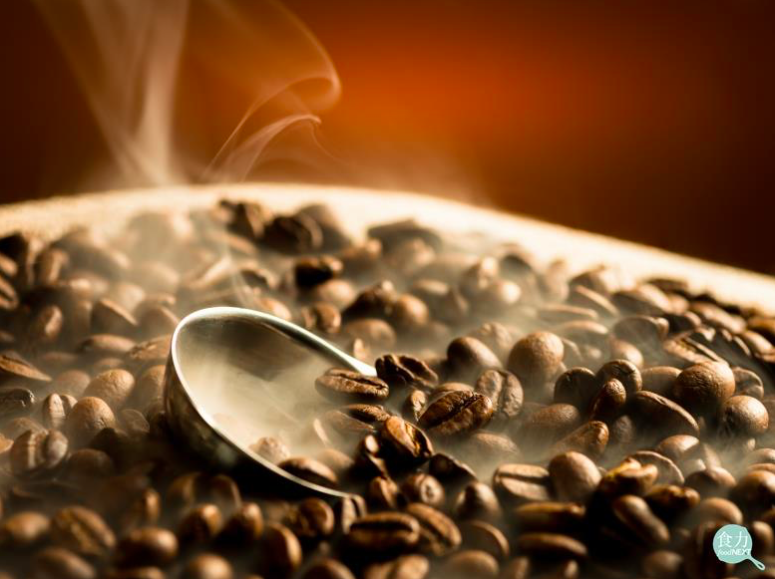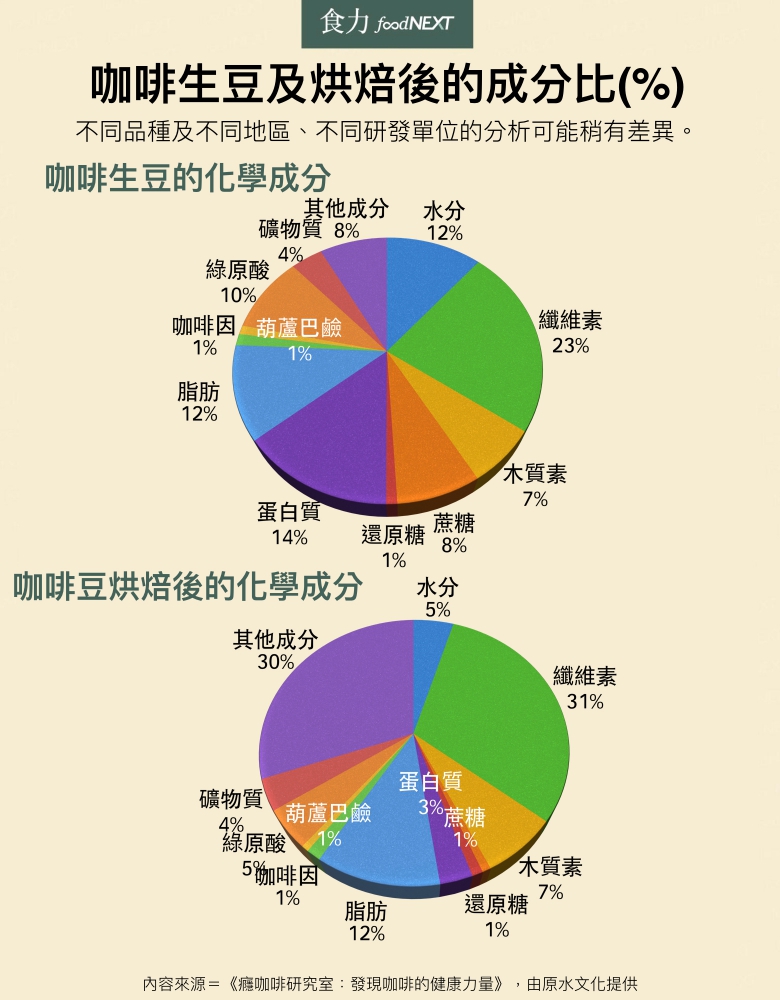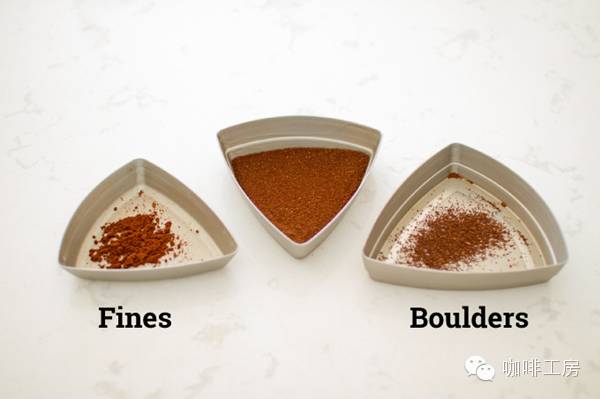Bake is good! Roasted coffee beans produce more than 650 aromas!
For professional baristas, please follow the coffee workshop (Wechat official account cafe_style)
Coffee beans must be roasted to have the aroma of coffee, because when roasting raw beans, the volatile compounds will decompose or interact with other components to form the unique aroma and flavor of coffee. at present, it is known that roasted coffee beans can produce at least 650 aromas.

Coffee raw beans are warehouses full of chemicals.
Nutritionist Jonny Bowden lists coffee as one of the 150 healthiest ingredients on the planet and the number one source of antioxidant food in the American diet. Of all the ingredients and drinks, coffee is the most artistic, skillful and changeable, but it is also controversial. The complex composition of coffee, the complicated production process, and the chemical changes produced during processing are all important basic knowledge carefully studied by coffee researchers and enthusiasts.
Coffee raw bean is a warehouse full of chemicals, such as a certain type of Arabica coffee, more than thousands of ingredients have been identified, of which hundreds are aromatic and are the most fragrant in human drinks.
There are only 150 vanilla fragrances commonly used for seasoning in the catering industry, and even wine and tea are far less mellow than coffee. Coffee contains many high-quality acids, such as chlorogenic acid, citric acid, malic acid, acetic acid, phosphoric acid and quinic acid, as well as other organic acids, which are produced with the decomposition of carbohydrates during baking. at present, more than 30 kinds of organic acids have been determined, of which 15 are volatile. In general, the concentration of organic acids is the highest in moderate baking and decreases with heavy baking.

Carbohydrate
The carbohydrates in coffee beans can be divided into polysaccharides and low molecular weight sugars, the latter contains monosaccharides, disaccharides and trisaccharides, reducing sugars and non-reducing sugars, as well as some sugar derivatives, such as gum. The contribution of carbohydrates to coffee lies in changes in aroma and color. In terms of aroma, carbohydrates will not only emit aroma after baking, but also absorb other volatile aroma, making coffee show different special flavor.
The carbohydrate content of raw coffee beans is about 38.5%, of which about 8.7% belongs to low molecular weight sugars, which will produce caramelization during the baking process and convert into ingredients such as caramel pigments, while polysaccharides and pectin are mainly cellulose (23.1%) or lignin (6.7%) components.
Low molecular weight sugars
Sucrose is the main free sugar in raw coffee beans, and its content varies with different varieties, sources and maturity. Other simple sugars, such as reducing sugar, can also be detected from the extract of raw coffee beans, as well as glucose and fructose.
After roasting, the low molecular weight sugars of coffee beans change, and the changes vary according to the degree of roasting. Sucrose is lost most rapidly, with a loss rate of 97% for light baking, 99% for moderate roasting and 100% for heavy roasting. Glucose, fructose and arabinose are also lost to a considerable extent.
Polysaccharides
This is a very important ingredient of raw coffee beans, accounting for about 40% of dry matter. If divided by species, polysaccharides include polygalactose, polymannose, polyarabinose and cellulose, all of which make up the plastids of coffee beans.
Even after baking, polysaccharides will still preserve a certain amount. Previous studies have found that the effect of baking degree is not significant, with a retention rate of about 70%, with the retention rate of cellulose being the highest and that of polyarabinose the lowest.
Protein and amino acid
The protein content of raw coffee beans is about 14.4%. After deducting nitrogen compounds such as caffeine and trigonelline, the protein content is about 11.9%. In addition to crude protein, coffee beans also contain a variety of enzymes, such as lipolysase (lipase), proteolytic enzyme, sugar hydrolase, galactose hydrolase and peroxidase and so on. Coffee raw beans contain about 0.15 Mel 0.25% free amino acids, which have a greater impact on the flavor of coffee, but have less effect on the taste. Once roasted, the protein content of raw beans will be reduced to 3.0%.
Lipids
Coffee oil (coffee oil) in the endosperm of raw beans and the wax in the outer layer of coffee beans together constitute the lipids of raw coffee beans. Coffee oil contains triglycerides and a considerable amount of other lipids, but its content and composition vary from variety to breed. Generally speaking, the average content of raw beans is about 11.5%. Even if baked, about 97% are still preserved in the form of lipids.
Volatile substances
Volatile compounds are the main source of coffee flavor, which greatly affects the quality of coffee. There are many kinds of volatile substances, and their existence will affect the aroma and quality of coffee, especially when roasting raw beans, especially when the volatile compounds are cut off or derived from the reaction. All thermal decomposition or interactions between components, such as sugars, amino acids, organic acids and phenolic compounds, will form the unique aroma and flavor of coffee.
In addition, the factors affecting the volatile components of coffee include the variety of beans, climate, soil conditions, storage of raw beans, baking temperature and time, and baking equipment.
Raw coffee beans must be roasted in order to produce the coffee aroma we usually smell. There is no special aroma of coffee before roasting. At present, it has been determined that the volatile aroma in raw beans can produce at least 650 kinds of aroma after baking, such as hazel, cream, caramel, grass, smoke, scorch, spice and bitterness, etc. it is the largest variety of volatile aroma components in all food and beverages. in addition, the degree of roasting will also affect the flavor of coffee.
Moisture content
With different processing stages and products, the water content of coffee beans varies greatly. The moisture content of wet coffee beans with film is about 50%, that of dried raw coffee beans is about 11.5%, and that of roasted coffee beans is only about 4.8%. Because coffee beans contain a considerable amount of water colloidal macromolecules, such as proteins and polysaccharides, they can combine water in many different physical and chemical ways and exist in beans.
Important Notice :
前街咖啡 FrontStreet Coffee has moved to new addredd:
FrontStreet Coffee Address: 315,Donghua East Road,GuangZhou
Tel:020 38364473
- Prev

Tangled coffee grinding-should fine powder be sifted after all?
Professional barista communication Please follow the coffee workshop (Wechat official account cafe_style) for baristas and enthusiasts who often visit the restaurant, all kinds of bean grinders are certainly no stranger, such as Mazzer, Big Eagle, Little Eagle, Big Pegasus, Pegasus, Yang Jia 900n, Xiao Fuji, Xiao Steel Gun, BG, EK and so on. Each mill has its own advantages.
- Next

Bonavita, which country?
Following Cafe Review (Wechat official account vdailycom) found that Beautiful Cafe opened a small shop of its own as the brand of choice for temperature control pots for hand-brewed coffee. Bonavita has always been loved by world-class coffee masters. Hand-brewed coffee is the most popular way of brewing coffee in the third wave, that is, in today's boutique coffee era. both its production method and coffee flavor are worthy of in-depth study and discussion.
Related
- Beginners will see the "Coffee pull flower" guide!
- What is the difference between ice blog purified milk and ordinary milk coffee?
- Why is the Philippines the largest producer of crops in Liberia?
- For coffee extraction, should the fine powder be retained?
- How does extracted espresso fill pressed powder? How much strength does it take to press the powder?
- How to make jasmine cold extract coffee? Is the jasmine + latte good?
- Will this little toy really make the coffee taste better? How does Lily Drip affect coffee extraction?
- Will the action of slapping the filter cup also affect coffee extraction?
- What's the difference between powder-to-water ratio and powder-to-liquid ratio?
- What is the Ethiopian local species? What does it have to do with Heirloom native species?

